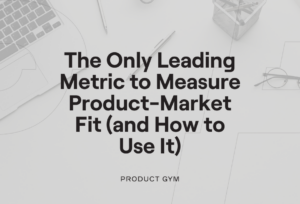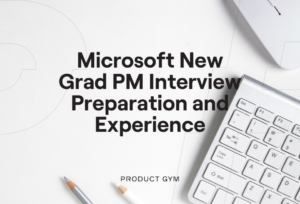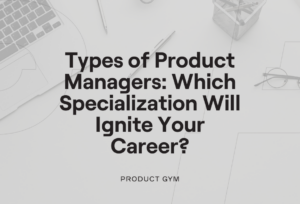No matter what product management position you’re interviewing for, questions about product design are bound to come up. One infamous such question is the “build vs buy” scenario. Essentially, interviewers will want to know how you would determine whether to build or buy something on the job.
The buy vs build dilemma can be particularly tricky, especially for newer or first-time Product Managers. Without previous experience to draw on, it can be hard to feel confident in your problem-solving answer. Even experienced Product Managers may find that their current approach isn’t as effective as it could be. But it doesn’t have to be that way! Here’s what you need to know to prepare for this question and leave a great impression.
Buy vs Build: What Are Interviewers Looking For?
Let’s start by breaking down what the Hiring Manager is trying to find out with this question. When an interviewer asks you how you would determine whether to buy or build a feature, product, or resource, what are they really asking?
The easy answer is that they’re trying to understand your approach to decision-making. You have to balance PM skills like prioritization, and time and budget management, to decide whether something should be outsourced (bought) or made (built).
For example, if given the choice between purchasing a CRM or building your own in-house, which would you choose? How would you come to that decision? Another example could be choosing to go ahead and outsource certain work to a contractor instead of hiring someone internally. Is one option better than the other, as a rule of thumb?
What Skills Should You Communiacte?
At its core, the question is all about your problem solving skills. While industry knowledge and experience is always an asset in an interview, your ability to ask the right questions will be the biggest make or break factor on a successful answer.
This question is also measuring your skills when it comes to finding the best possible solutions to unique challenges. Is the solution internal, or will it need to be solved outside of the company? The answer will depend on many factors, and it’s your role to weigh them all and make the choice.
Demonstrate Nuance
The truth is that there is no perfect, ideal answer to the build vs. buy question. As is the case with so many product management interview questions, it is depending on too many variables to make a sweeping absolute statement. There’s no situation where you will be able to decide that either building or buying is always going to be the right answer. Whether you’re a first-time Product Manager or an experienced Product Manager, this question should be approached as a ‘real scenario’ question every time.
This is where an experienced Product Manager might lean heavily on their past experiences and give a knee-jerk response based on what has worked for them in the past. Newer PMs might try to use experiences they’ve heard about through others or research they have prepared with to do the same. This isn’t horrible as far as answers go, but beware of this approach.
Even if you think you are being thoughtful and reflective by drawing on real life scenarios, giving limited examples can easily pigeonhole you in the eyes of the interviewer. A successful answer should demonstrate your grasp of nuance.
How to Answer the Buy vs Build Product Design Interview Question
So what is the best way to answer the build or buy question? First of all, know that if a company is asking this question, there’s a good chance they currently have a specific problem of this nature. As a starting point, make it your first priority to ask them about the source of this question and any issues they may currently be dealing with. The goal is to get them to divulge to you as many details as possible to help inform your answer. The template for that might look something like this:
Q: Tell me about how you would determine whether to buy something or build something?
A: That really depends. Let me ask you this — is this a problem that you guys are confronted with right now? Or are you asking hypothetically how I would determine this on a day-to-day basis as your next Product Manager?
Lean into Interview Dialogue
Once you have engaged the interviewer, you can start to have dialogue. This is great because it highlights your listening and critical thinking skills and really helps to get the interviewer over onto your side. Once you have more context, you can start to use your supporting experiences or scenarios to give them options. If they come back to you with a specific scenario that they are facing, you are now in a better position to tailor your answers. The suggestions you amke should leave them feeling like you are already on the same team, trying to figure things out together.
If the situation does turn out to be a purely hypothetical one, then you have at least opened a window that will allow you to highlight how flexible your answer can be depending on the circumstances. Giving a quick and wide range of different examples will get your point across and save you from being pigeonholed.
One Final Tip
Never be afraid to answer a question with a question. No matter which direction the conversation starts to go in, approach the questions as though you’re offering a consultation. You are trying to add value to a stressful situation by helping them solve a problem. This will come down to your engagement with the person conducting the interview and your ability to deliver a killer pitch.
If you are still feeling unsure about putting these pieces together, schedule a free call with one of our PM career coaches. We’d love to answer any questions you still have.



